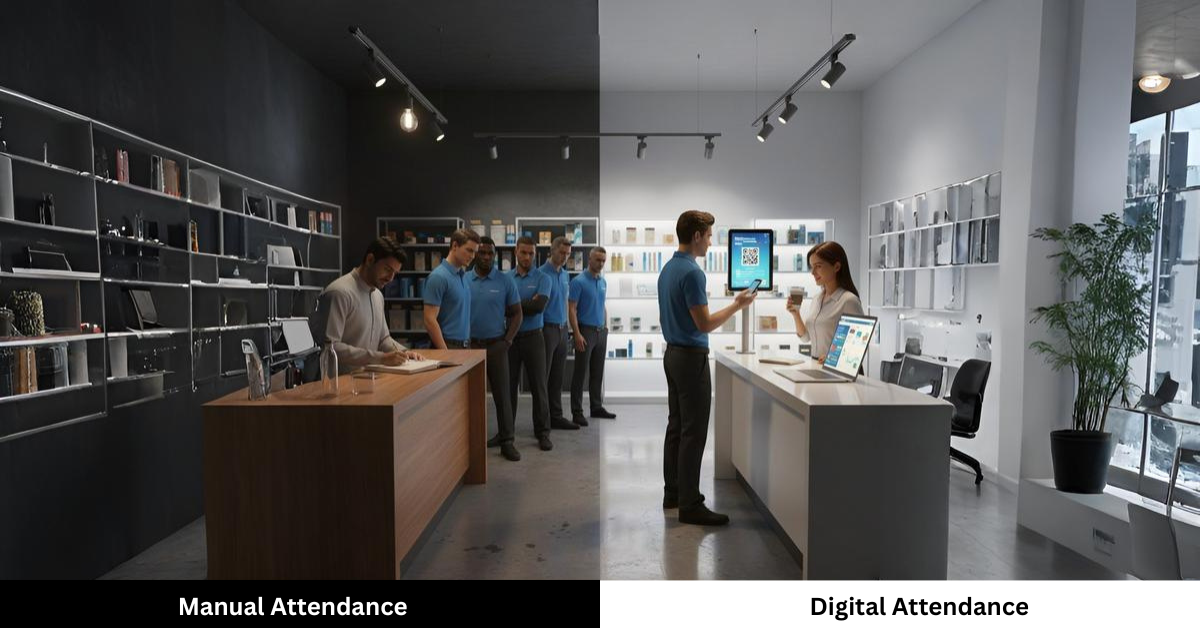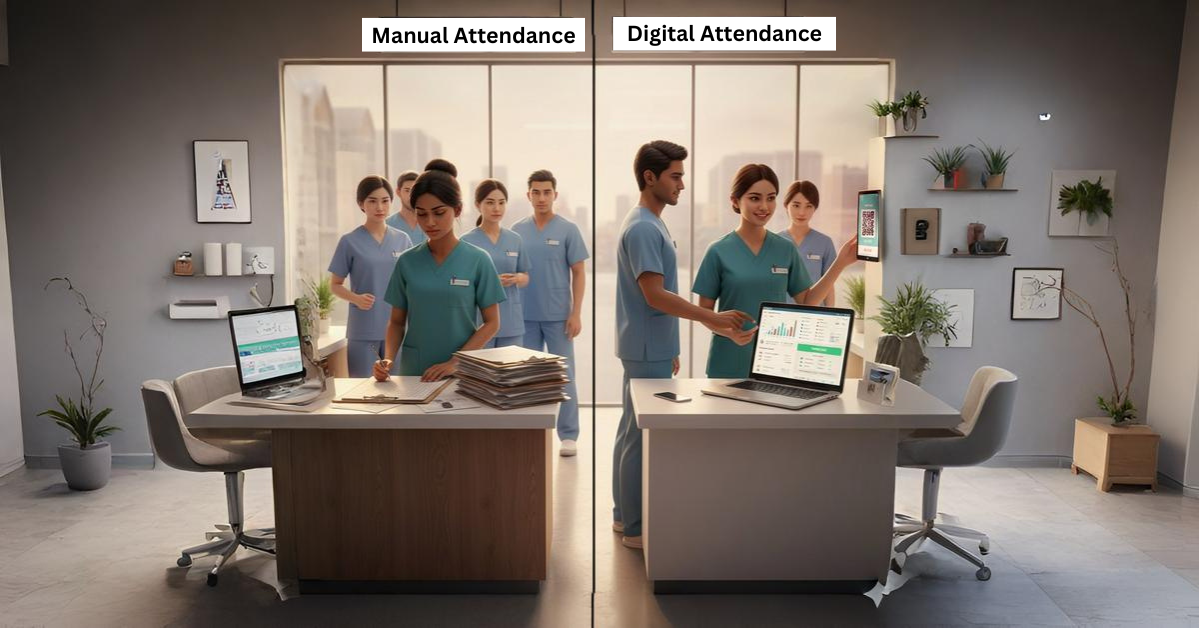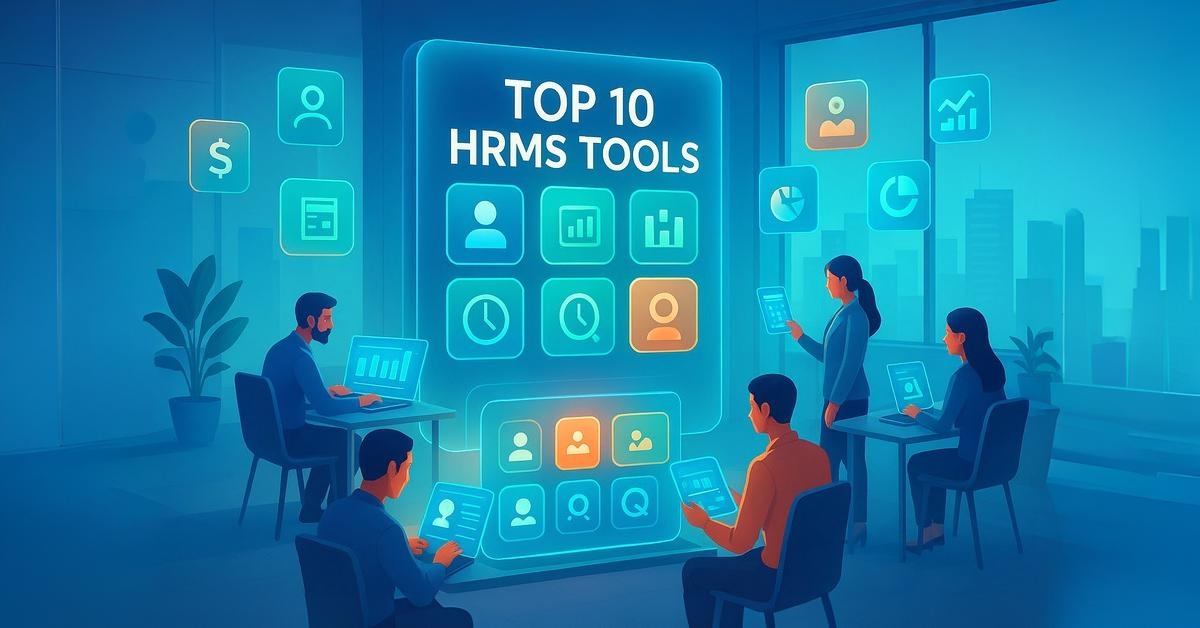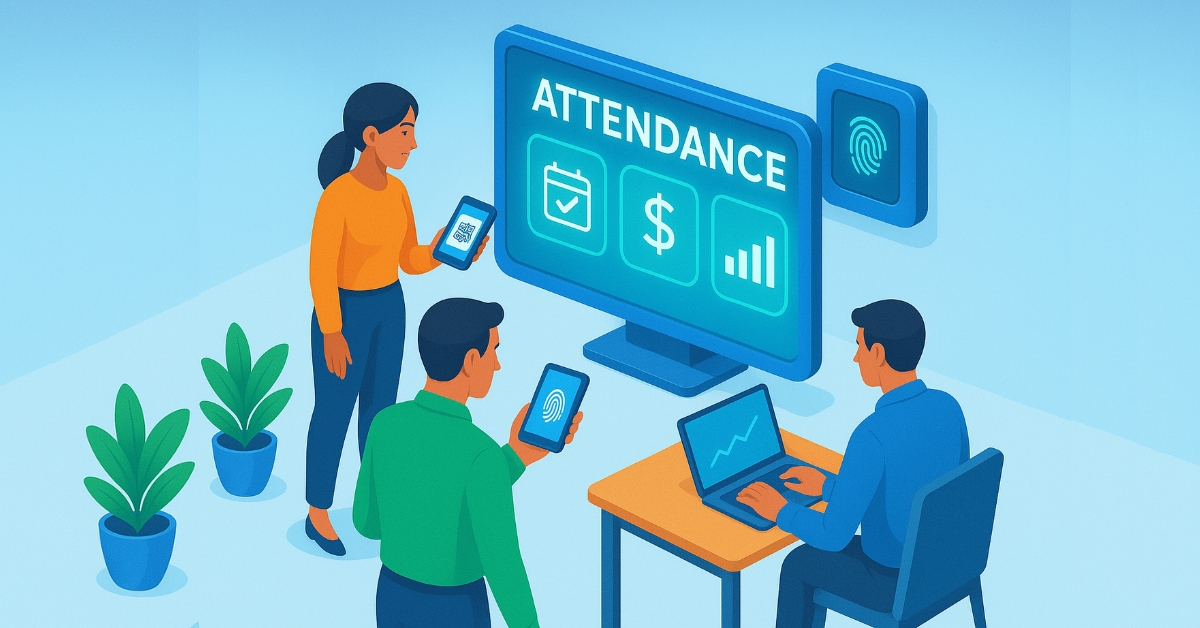Every organization, from small startups to big corporations, has one department that’s vital for ensuring everything runs smoothly and that employees are content — the HR department. But what does HR Full Form mean, and why is it so important? Whether you’re a student, a job seeker, or a working professional, understanding HR is essential for grasping how organizations operate and how they manage their workforce.
In this blog, we’ll explore the HR Full Form, its definition, key responsibilities, significance, and how the HR landscape is changing with new technology. Let’s get started!
What is the HR Full Form?
The HR Full Form is Human Resources. This term encompasses the individuals who make up a company’s workforce, as well as the department that oversees them. Every organization—whether it’s a small startup, a medium-sized business, or a large corporation—has an HR department dedicated to managing employees, ensuring everything runs smoothly, and fostering a positive work environment.
In simpler terms, HR full form is all about effectively managing people—this includes hiring the right talent, providing training, handling payroll, addressing workplace issues, and supporting employees in reaching their full potential. Without HR, no organization can truly thrive, as employees are the lifeblood of any business.
What is HR (Human Resources)?
The Human Resources department is dedicated to managing everything related to employees, from hiring to retirement. HR professionals act as a crucial link between management and employees, ensuring that both parties’ needs are addressed while aligning the company’s objectives with employee satisfaction. The HR Full Form is Human Resources. Practically speaking, HR is responsible for placing the right people in the right positions. For example, when a company needs a software developer, the HR team steps in to post job openings, sift through applications, conduct interviews, and choose the best candidate. Beyond just recruitment, HR also takes care of training programs, payroll, performance evaluations, and making sure the company follows labor laws.
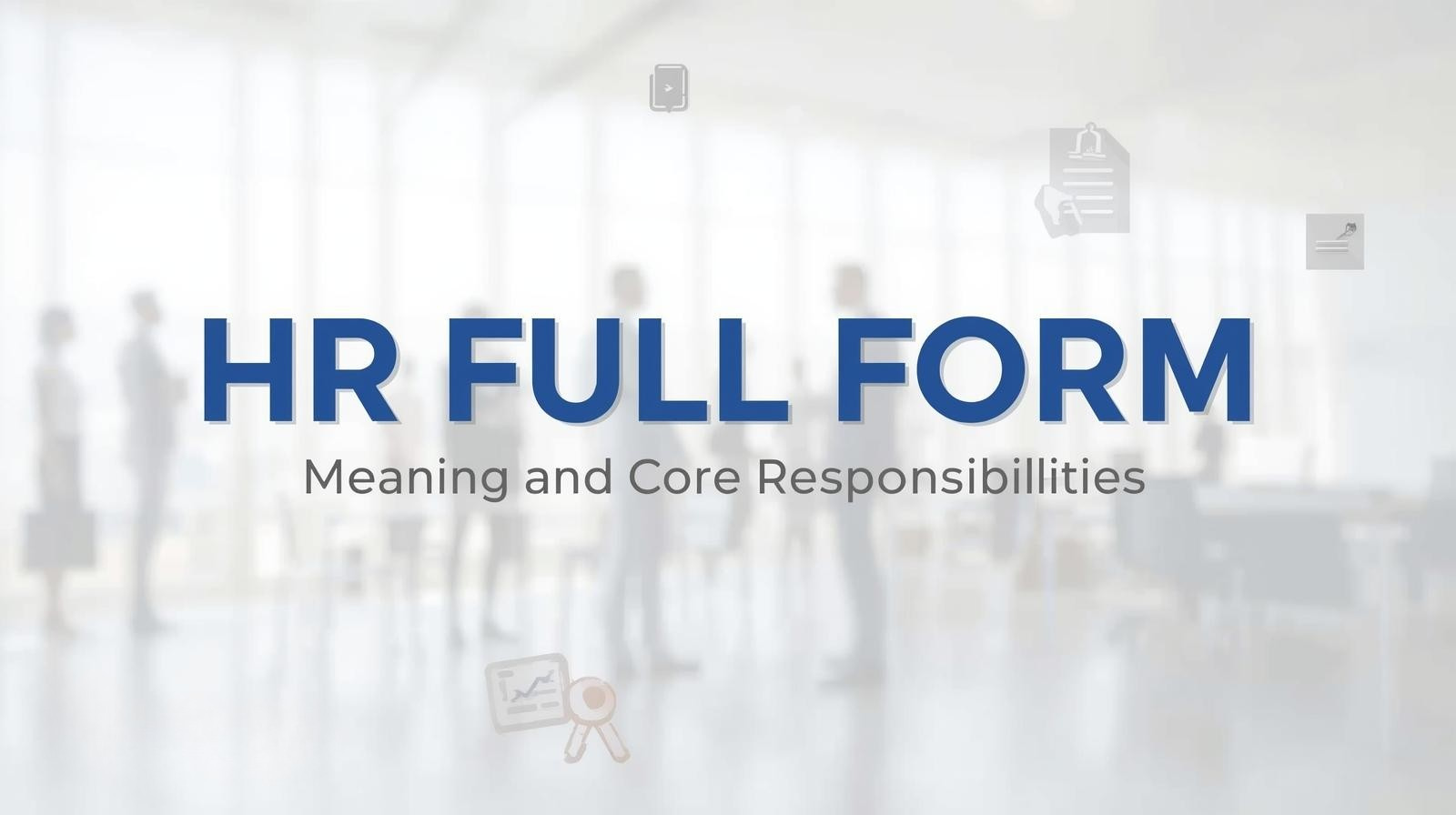
Importance of HR in an Organization
Human Resources (HR) is an integral part of any organization. It acts as a liaison between management and employees, facilitating smooth operations and a healthy work environment. HR not only recruits employees but also ensures that employees are motivated, trained, and satisfied. Let’s consider the key reasons why HR is so important to any organization.
1. Recruitment and Talent Acquisition
One of the key roles of HR is recruiting and identifying the right people. HR professionals design job positions, advertise positions, screen applications, and conduct interviews. Their goal is to identify not only candidates with the skills but also those who fit into the organization’s culture. A good recruitment process helps an organization build an effective team that contributes to business success.
2. Training and Development
After recruitment, HR ensures that employees are adequately trained to perform their duties effectively. They conduct onboarding sessions, workshops, and skills training programs. This continuous learning process provides employees with the opportunity to grow professionally and personally. Well-trained employees are more confident, productive, and better equipped to handle challenges.
3. Employee Engagement and Motivation
The Human Resources department is responsible for keeping employees engaged and motivated. They plan team-building exercises, reward programs, and performance evaluations. Engaged employees are more loyal, enthusiastic, and contribute positively to the company’s success. Human Resources also promotes open communication so that employees feel valued and heard.
4. Performance Management
The Human Resources department oversees performance appraisal systems to monitor and enhance employee productivity. Regular appraisals, feedback sessions, and goal-setting meetings help employees understand their strengths and weaknesses. An effective performance management system also helps with promotions, salary revisions, and rewards.
5. Conflict Resolution
Workplace disputes are inevitable, yet the Human Resources department resolves them professionally. Whether employee misunderstandings or management issues, the Human Resources department helps bring about equitable and fair resolution. They foster cooperation, communication, and a respectful work environment, reducing stress and enhancing collaboration.
6. Remuneration and Benefits Management
The Human Resources department develops salary structures, bonuses, and employee benefits such as health insurance, leave, and retirement arrangements. A transparent and equitable pay policy keeps employees satisfied and reduces the likelihood of leaving. Attractive benefits also motivate the organization to attract the best talent from outside.
7. Compliance and Legal Responsibilities
All organizations are required to comply with labor laws and employment regulations. The Human Resources department ensures the company complies with these laws to avoid legal problems. These include record keeping, ensuring workplace safety, and managing employee rights. Complying with the law helps the HR department protect the organization’s reputation and financial health.
8. Developing a Positive Work Culture
The HR department helps develop and maintain a company’s work culture. They establish values, ethics, and behavioral norms that align with the organization’s objectives. A positive work culture increases productivity, reduces stress, and fosters a sense of belonging in the workplace.
9. Employee Retention
Retaining employees is as important as recruiting new employees. The HR department maintains job satisfaction through continuous feedback, career development opportunities, and rewards programs. If employees are valued and nurtured, they are less likely to leave, reducing the organization’s time and recruitment costs.
10. Strategic Planning and Organizational Development
Today’s HR departments are strategic partners in business planning. They review labor data, anticipate future needs, and align HR plans with business objectives. By effectively placing the right individuals in the right roles, HR directly contributes to an organization’s growth and long-term success.
11. Health, Safety, and Wellness
The HR department ensures a healthy and safe work environment for everyone. They implement safety protocols, mental health initiatives, and wellness programs. Employees will be more productive and their morale will increase when they feel safe and cared for.
12. Diversity and Inclusion
The HR department promotes diversity by providing equal opportunities to all employees, regardless of gender, race, or ethnicity. A diverse and inclusive work environment paves the way for new ideas, creativity, and a favorable brand reputation for the organization.
Key Responsibilities of HR Department
The Human Resources (HR) department carries out a number of key responsibilities that enable a company to run effectively and have a well-redundant workplace. Talking of the HR Full Form, we are not just referring to hiring and firing here — HR is tasked with managing people, policies, and performance to help the organization prosper in the long run. Below are the primary roles of an HR department elaborated in detail:
1. Recruitment and Hiring
Attracting and hiring the correct talent for the organization is one of the primary duties of HR. Job descriptions are written, postings are put out, resumes are screened, and interviews are held by the HR department. Their mission is to make sure that each new employee not just meets the requirements of the job, but also fits in with the organizational culture. A properly thought-out hiring process minimizes turnover and enhances worker satisfaction.
2. Employee Onboarding
After an employee is hired, HR oversees the onboarding process — familiarizing them with company policies, co-workers, and work processes. Proper onboarding makes employees feel at ease and confident from the very first day, making it a transition into the work environment easy and seamless. This initial experience tends to influence their long-term affiliation with the company.
3. Training and Development
HR concentrates on skill development of employees through ongoing learning programs, workshops, and seminars. Training maintains employees current with the latest industry trends and technology. As employees increase in capability and knowledge, company performance and innovation directly benefit. HR also spots future leaders and readies them for more senior roles.
4. Performance Management
Assessment of employees’ performance is a major HR function. HR teams establish performance targets, carry out appraisals, and offer constructive criticism. They also reward good-performing employees. This encourages staff to work harder and sync their plans with the company’s mission. Performance assessments carried out regularly also determine areas where the employees require special assistance or training.
5. Payroll and Compensation
Another critical responsibility of HR is the administration of employees’ salaries, bonuses, deductions, and benefits. HR makes sure that each employee is correctly paid on time. HR also administers benefits like health coverage, leave pay, and incentives. An open and well-administered payroll system generates trust and minimizes financial conflicts among employees and management.
6. Employee Relations
HR acts as a liaison between management and staff. They mediate workplace disputes, employee complaints, and communication issues. Healthy employee relations foster a positive workplace culture and minimize turnover. HR practitioners also uphold respect, inclusivity, and collaboration within the organization.
7. Compliance and Legal Obligations
All organizations have to abide by labor laws, occupational safety regulations, and ethical business ethics. HR makes sure that the organization is compliant with all employment-related legal regulations. They also maintain proper records of employee contracts, leave records, and disciplinary procedures to avoid legal entanglement.
8. Workplace Safety and Well-Being
HR departments also ensure a healthy and safe working environment. They provide safety training, check the conditions of work, and develop wellness programs that foster good mental and physical health. Through ensuring employee well-being, HR improves morale and productivity.
9. Company Culture and Engagement
Creating a solid organizational culture is also a key HR activity. With engagement programs, celebration, and transparent communication, HR makes all employees feel valued and motivated. A good work culture not only boosts performance but also retention.
10. Strategic Planning
Today’s HR departments do more than administer; they are actively involved in strategic decision-making. HR professionals predict workforce requirements, succession planning, and aligning HR initiatives with business objectives. They leverage analytics and digital technologies to measure performance and improve decision quality.
Types of HR Roles
When we realize the HR Full Form (Human Resources), it’s obvious that HR isn’t one job but a collection of various jobs that collectively make an organization function smoothly. Every HR professional possesses distinct tasks depending on his/her area of specialization, company size, and organizational requirements. The following are the most prevalent forms of HR jobs seen in contemporary workplaces:
1. HR Manager
The HR Manager is tasked with managing the whole HR department and ensuring all procedures, policies, and operations are carried out effectively. They oversee recruitment, employee engagement, payroll, and compliance functions. HR Managers also collaborate with top management to align HR strategy with business objectives. Their leadership is vital in ensuring a productive and motivated workforce.
2. HR Executive
The HR Executive manages daily HR functions. They involve maintaining staff records, handling leaves, support in payroll, and organizing training programs. They assist in answering employee inquiries and aid HR Managers in implementing company policies. HR Executives are usually the initial point of contact for employees when they have HR-related concerns.
3. HR Recruiter / Talent Acquisition Specialist
The primary responsibility of recruiters is to hire new talent within the organization. Recruiters design job descriptions, sift through resumes, interview candidates, and consult with hiring managers in order to find appropriate candidates. The primary objective of recruiters is to employ skilled and culturally appropriate employees who can make a positive contribution to the company. In most organizations, the recruiter is referred to as Talent Acquisition Specialist.
4. Training and Development Officer
This HR position is focused on strengthening employees’ skills and knowledge. The Training and Development Officer plans and conducts training sessions, workshops, and e-learning courses. They determine gaps in employees’ skills and assist them in enhancing performance. Their work keeps the workforce up-to-date, confident, and prepared to deal with new challenges.
5. Payroll and Compensation Specialist
The Payroll Specialist takes care of the money side of HR, making sure that all the workers are paid promptly and accurately. They determine salaries, deal with deductions, bonuses, and keep records of payroll. They also make sure that tax and labor laws are followed. A neat payroll system raises the level of employee confidence and satisfaction.
6. Employee Relations Officer
The Employee Relations Officer is responsible for building a positive employee-management relationship. They resolve workplace disputes, manage grievances, and foster a culture of respect and teamwork. They are there to ensure that employees hear their concerns and are valued, and this increases motivation and decreases turnover.
7. HR Business Partner (HRBP)
An HR Business Partner collaborates directly with department managers or top leadership to design and execute HR initiatives aligned with business objectives. HRBPs are more strategic in nature than traditional HR roles. HRBPs review workforce data, oversee organizational changes, and assist in creating long-term human resource strategies.
8. HR Analyst
The HR Analyst gathers and analyzes HR data to enhance decision-making. They utilize HR software and analytics tools to monitor employee performance, turnover, and satisfaction rates. Their reports enable management to make enhanced HR strategies and policies. HR analytics is currently one of the most sought-after positions in human resources in today’s digital age.
9. Compliance and Policy Specialist
This job guarantees that the company is adhering to all employment legislation and internal guidelines. Compliance officers oversee audits, monitor legal changes, and guarantee that the firm does not incur fines. They assist in creating HR policies that ensure equity, equality, and workplace safety.
10. HR Generalist
The HR Generalist is a jack-of-all-trades who performs several tasks in HR — from payroll and hiring to training and employee engagement. This position is particularly prevalent in smaller and medium-sized companies where the HR department is smaller. The generalist skill set of the HR Generalist makes them one of the most effective contributors to the HR team.
11. HR Coordinator
An HR Coordinator is an administrative assistant to the HR department. They help with booking interviews, managing employee files, and coordinating HR events. Although it’s usually an entry-level position, it is wonderful exposure to everything HR and a great place to start for those entering an HR career.
12. HR Director / Chief Human Resources Officer (CHRO)
At the most senior level, the CHRO or HR Director oversees the whole human resource strategy of the organization. They oversee HR planning, budgeting, and policy-making. CHROs collaborate with CEOs and other senior leaders to create workforce plans that ensure long-term business growth. Their vision frames the company culture and future.
Key Functions of HR Full form
The HR department performs multiple functions that directly impact an organization’s success.
1. Recruitment and Selection
It’s all about finding and bringing on board talented individuals who fit the company’s needs perfectly.
2. Payroll Management
This involves accurately managing salaries, benefits, and keeping track of attendance.
3. Performance Appraisal
Here, we assess how employees are doing and provide helpful feedback to support their development.
4. Employee Relations
We work on fostering communication, resolving any conflicts, and creating a positive work environment.
5. Compliance and Legal Affairs
Our job is to make sure the organization adheres to labor laws and health and safety regulations
In short, HR is all about keeping employees happy, skilled, and aligned with the company’s long-term vision.
Difference Between HR and Administration
Though HR and Administration often work closely together, their roles are quite different. The HR department focuses on managing people — hiring, training, evaluating, and maintaining employee satisfaction. The Administration department, on the other hand, manages logistics — office supplies, maintenance, and company operations.
For example, HR may organize an employee training session, while Administration ensures that the training room, equipment, and resources are ready. HR deals with human needs and emotions, whereas Administration manages systems and processes.
In simple terms, HR focuses on people management, and Administration focuses on office management. Both are essential for an organization to function efficiently.
Challenges Faced by HR Professionals
The HR field can be incredibly rewarding, but it definitely comes with its fair share of challenges. One of the biggest hurdles HR professionals encounter is employee retention — keeping talented individuals engaged in a competitive job market. Another significant challenge is keeping up with technology, as HR systems now depend heavily on digital platforms for payroll, recruitment, and analytics. Managing workplace conflicts and staying compliant with ever-changing labor laws can also be quite demanding. Plus, HR teams have to strike a balance between organizational goals and employee satisfaction, which often calls for a good dose of patience, empathy, and strong communication skills. Despite these obstacles, skilled HR professionals find ways to foster harmony in the workplace and ensure everything runs smoothly day in and day out.
Future of HR in the Digital Era
The future of HR is rapidly shifting towards a more digital and data-driven landscape. Nowadays, companies are turning to HR software and AI tools to manage everything from attendance tracking to payroll automation and performance evaluations. This shift not only saves time and minimizes errors but also offers valuable insights into how to manage the workforce effectively. Take cloud-based platforms like QR Staff, for example; they make attendance management and payroll processing a breeze for businesses, no matter their size. On the other hand, AI tools can dive into employee performance trends, forecast turnover risks, and even pinpoint training needs. Looking ahead, the HR department will likely prioritize strategic decision-making over manual tasks. With automation taking care of the repetitive stuff, HR professionals will have more bandwidth to focus on employee engagement and fostering organizational growth.
HR as a Career Option
A career in HR can be incredibly rewarding and full of variety. To step into the world of HR, you usually need a bachelor’s or master’s degree in Human Resource Management, Business Administration, or something similar. Many professionals also go the extra mile by earning certifications like SHRM or HR Analytics to boost their expertise. Key skills for success in this field include strong communication, leadership, empathy, problem-solving, and organizational skills. HR positions can be found across all industries — whether it’s IT, healthcare, education, or manufacturing. When it comes to salaries, they vary based on experience and specific roles. For instance, an entry-level HR Executive in India might earn around ₹3–4 LPA, while HR Managers can pull in anywhere from ₹7–15 LPA or even more in larger companies. With the rising demand for HR analytics and tech, the future of HR careers is looking bright and full of potential.
Conclusion
To sum it up, the HR Full Form — Human Resources — is one of the most essential departments in any organization. HR professionals are key players in recruiting, training, managing payroll, and fostering positive employee relations. They work hard to keep the workforce motivated, skilled, and in sync with the company’s objectives. As workplaces adapt to digital changes, the role of HR is becoming increasingly strategic and tech-focused. Modern HR tools and software, like QR Staff, are making it easier for companies to handle attendance, payroll, and employee management tasks. Whether you’re a student considering a career in HR or a business owner aiming to enhance employee management, grasping the concept of HR is crucial for building a robust and thriving organization. In today’s rapidly evolving landscape, Human Resources is not just about managing people — it’s about empowering them to excel and grow alongside the company.
FAQs on HR Full Form
1. What is the HR Full Form?
The Full Form of HR is Human Resources. It is the department that takes care of employees, such as recruiting, payroll, training, and employee relations.
2. What are the main functions of HR?
The key HR functions are recruitment, training, payroll management, performance appraisal, welfare of employees, and compliance with labor legislation.
3. What is the difference between HR and Administration?
HR concentrates on management of people — recruitment, training, and employee relations — while Administration deals with office administration, logistics, and property management.
4. What qualifications are needed for an HR career?
To be an HR professional, a bachelor’s or master’s in Human Resources, Business Administration, or any related qualification is suggested.
5. How is technology changing HR?
Technology is revolutionizing HR using automation tools such as HR software and apps (e.g., QR Staff) that make it easy to track attendance, payroll, and employee information.
6. Why is HR important in a company?
HR makes sure employees are engaged, productive, and focused on firm objectives. HR handles hiring, training, compensation, and dispute resolution to ensure a healthy work environment.
7. What are common HR roles in companies?
Popular HR job titles are HR Executive, HR Manager, Recruiter, Training Manager, and Employee Relations Specialist — each of them responsible for different workforce management areas.
8. Is HR a good career in 2025?
Yes! HR is an expanding career with scope in every business. With digital HR tools and data analysis, experts can create fulfilling, future-proof careers.
9. How does HR support employee development?
HR assists employees in developing by providing training sessions, career progression programs, and feedback mechanisms to enhance ability and self-confidence in the work environment.
10. What is QR Staff, and how does it help HR professionals?
QR Staff is a smart attendance and payroll management app that helps HR professionals automate routine tasks, saving time and improving efficiency in workforce management.
11. Which is the best HRMS software in India?
If you are looking for the best HRMS software in India, there are several great options available depending on your business size and needs. From attendance tracking and payroll automation to employee management, modern HRMS tools make everything easier. To explore detailed comparisons and top-rated software, check out our complete guide here:
List Of HRMS Software In India.


